Kale, a hardy and nutritious leafy green, has soared in popularity, and rightly so. As a passionate gardener, I’ve grown to love kale for more than its health benefits.
This versatile vegetable is not only a superfood but also a superplant in the garden. Easy to grow and resilient, kale can provide a bountiful harvest with minimal fuss. Whether you’re a green thumb or new to gardening, kale is an excellent choice for your vegetable patch.
Let’s dive into the world of kale and explore how to grow and care for this wonderful plant.
Benefits of Growing Kale
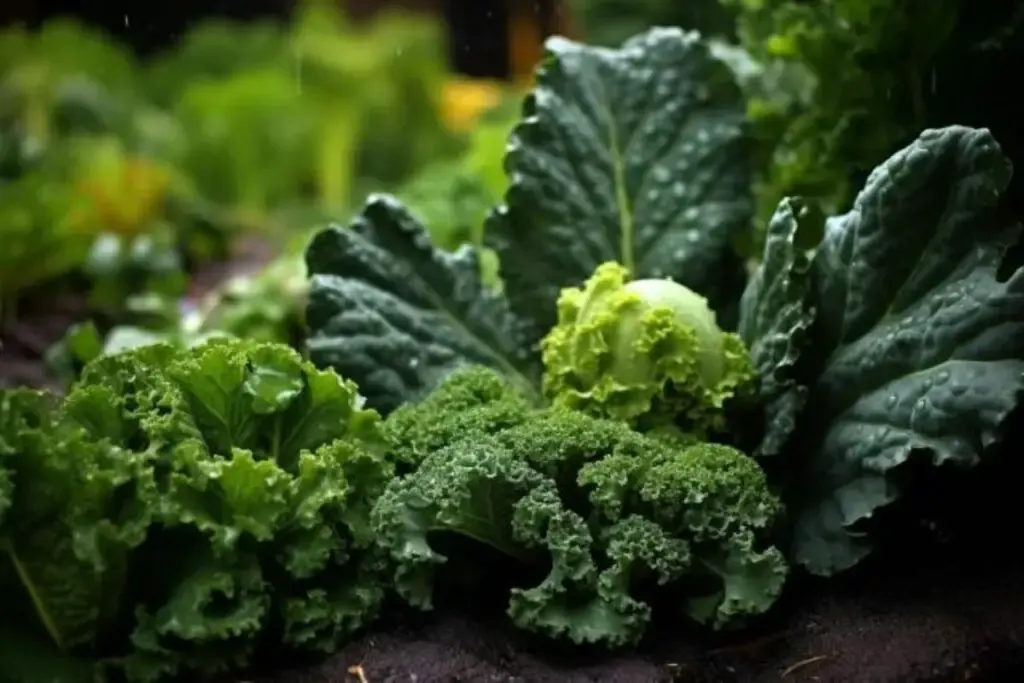
1. Nutritional Powerhouse
Kale is a nutrient-dense food, rich in vitamins A, C, and K, and minerals like potassium and calcium. Growing it in your garden means you’ll have a fresh, organic supply of one of the healthiest vegetables right at your doorstep.
2. Extended Growing Season
One of the best things about kale is its hardiness. It can withstand cooler temperatures, making it an ideal vegetable for extending the gardening season. In fact, a light frost can even sweeten its leaves.
3. Versatility in the Kitchen
Kale’s culinary uses are vast. From smoothies and salads to sautés and chips, kale can be used in a variety of dishes.
Growing your own kale allows you to experiment with fresh, homegrown greens in your cooking.
My Favorite Kale Varieties
There are several kale varieties, each with its unique taste and texture. Here are three of my favorites:
1. Curly Kale
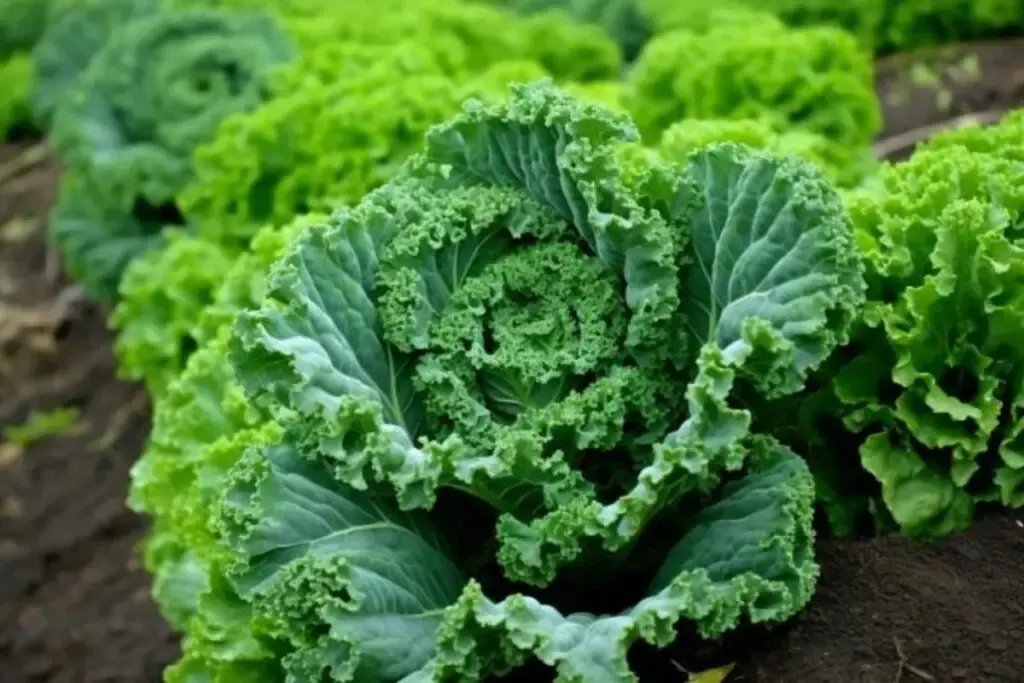
This is the type of kale most commonly found in grocery stores. Its ruffled leaves are not only beautiful but also have a distinct, peppery flavor. It’s perfect for salads and kale chips.
2. Lacinato Kale (Dinosaur Kale)
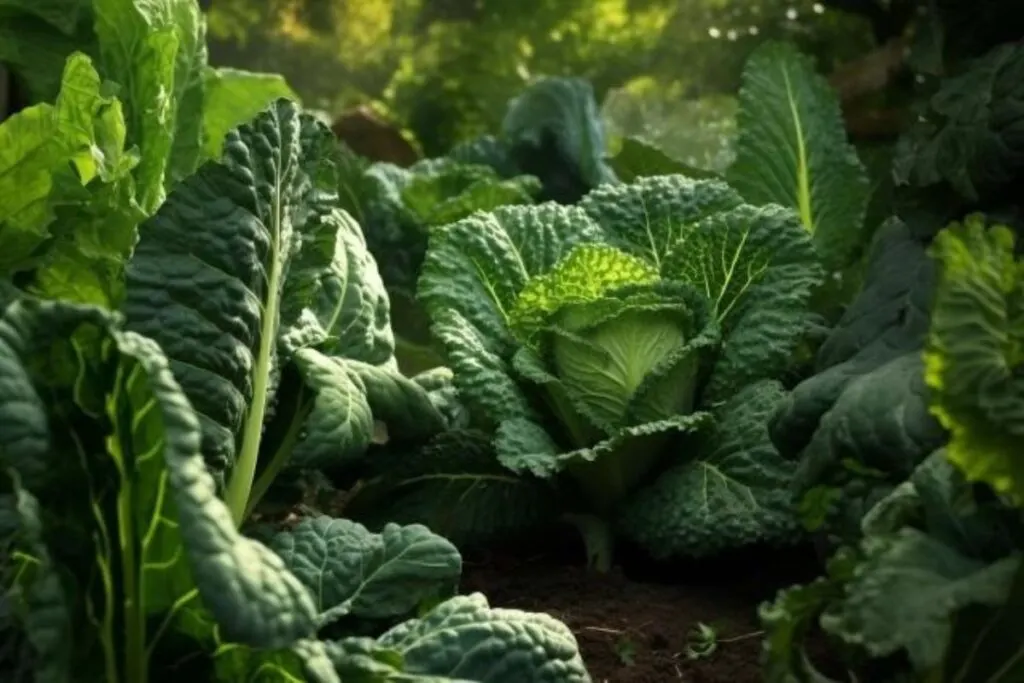
Known for its dark blue-green leaves with a slightly wrinkled texture, Lacinato kale has a sweeter and more delicate taste than curly kale. It’s excellent in soups and stews.
3. Red Russian Kale
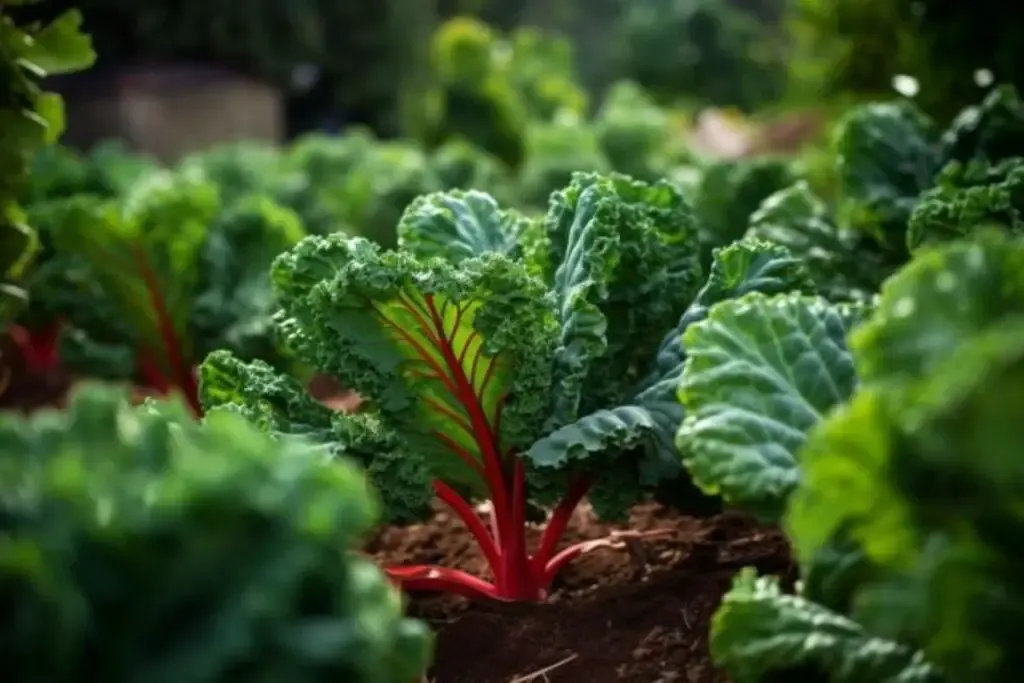
This variety has flat, fringed leaves that are a beautiful reddish-green. It’s known for its sweet and mild flavor, especially when young. Red Russian kale is great both raw and cooked.
Kale Care
Kale, with its resilience and hardiness, is a joy to grow. It asks for little but gives back so much in return.
Whether you’re cultivating kale for its nutritional bounty or as a vibrant addition to your garden, understanding its basic care requirements will ensure a healthy and productive crop.
Let’s break down the essentials of kale care.
Planting
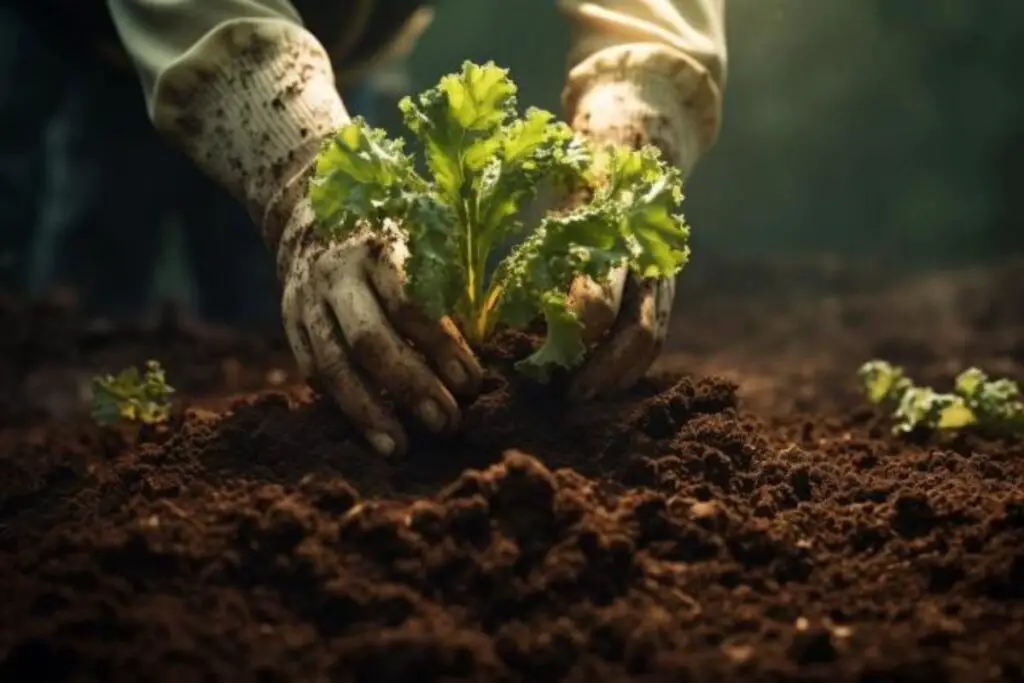
Planting kale can be done either by direct seeding in your garden or by starting seeds indoors and transplanting them outside.
For a continuous harvest, consider planting kale at intervals throughout the growing season. If you’re planting seeds directly in the garden, sow them about 1/4 to 1/2 inch deep.
For transplants, plant them at the same depth they were in their pots. Space the plants about 12 to 18 inches apart to give them room to grow.
Light
Kale thrives in full sun but can tolerate partial shade. At least 4 to 5 hours of sunlight per day is ideal. If you’re growing kale in a particularly hot climate, some afternoon shade can help prevent the leaves from getting too tough or bitter.
Soil
Kale prefers well-draining soil with a pH between 6.0 and 7.0. Enriching your soil with compost or well-rotted manure will give your kale a great start.
Good soil preparation helps ensure that your plants have the nutrients they need to grow strong and healthy.
Water
Consistent moisture is key to growing kale. Aim to keep the soil evenly moist but not waterlogged. During dry spells, water your kale plants deeply.
This is especially important in the early stages of growth to encourage deep-root development.
Temperature and Humidity
Kale is a cool-weather crop that does well in temperatures between 35°F and 75°F (2°C to 24°C). It can withstand frost, which can even enhance its flavor.
Kale is generally not fussy about humidity, making it a versatile plant for various climates.
Fertilizer
While kale isn’t a heavy feeder, it does benefit from a balanced fertilizer. An application of a balanced, all-purpose vegetable fertilizer at planting and mid-season can help support its growth.
You can also use organic options like fish emulsion or compost tea for an extra boost.
Harvesting Kale
Harvesting kale is a gratifying experience, as this leafy green is both prolific and easy to harvest. Start picking leaves once they are about the size of your hand.
Harvest from the lower section of the plant first, taking the older, outer leaves and leaving the inner ones to continue growing.
This method encourages the plant to produce new leaves, extending the harvest period. Kale can be harvested as needed, but regular picking encourages more growth.
The great thing about kale is that it can withstand frost, and the leaves often become sweeter after a light frost, making it a fantastic crop for extended harvesting into the cooler months.
Pruning
Pruning kale isn’t typically necessary, but it can be helpful to remove any yellow or damaged leaves. This helps to improve air circulation around the plant and can reduce the risk of disease.
Additionally, if you’re growing kale for ornamental purposes, you might prune it to shape the plant to your liking.
Propagating
Kale is most commonly propagated from seeds. While you can save seeds from your plants, it’s important to note that kale can cross-pollinate with other members of the cabbage family, which might result in a different plant in the next generation.
For consistent results, it’s usually best to start with new seeds each season.
How to Grow Kale From Seed
Growing kale from seed is straightforward. You can start seeds indoors about 4 to 6 weeks before your last frost date or sow them directly in the garden.
Plant the seeds about 1/4 to 1/2 inch deep and keep the soil consistently moist until they germinate. Once the seedlings have a few true leaves, thin them to ensure they’re spaced about 12 to 18 inches apart.
Growing in Pots
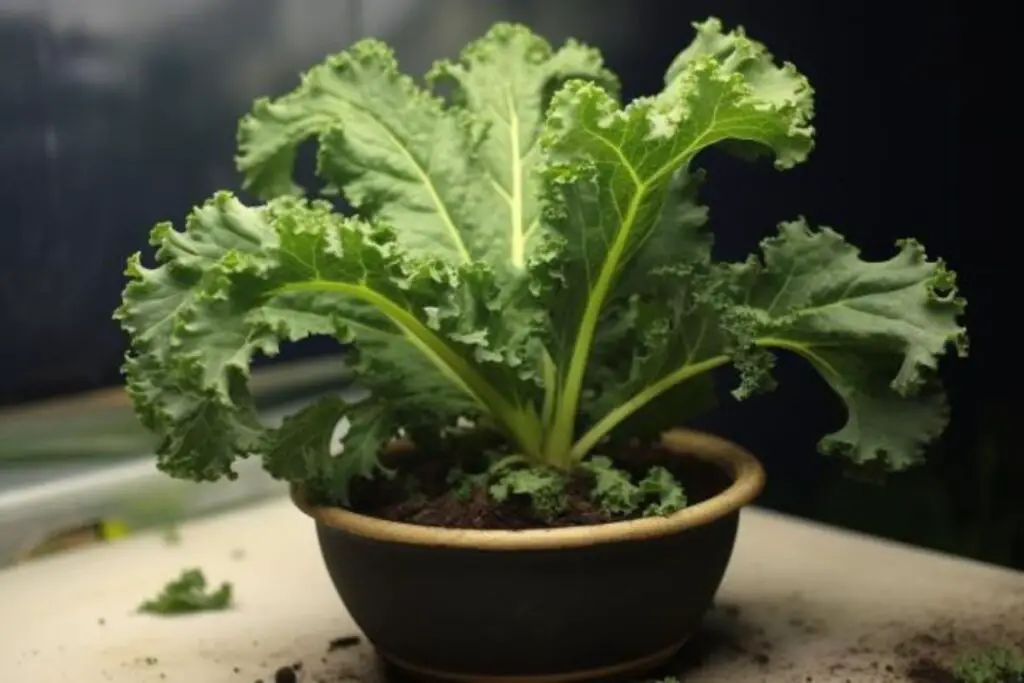
Kale is an excellent plant for container gardening. Choose a pot that is at least 12 inches deep and has good drainage.
Fill it with a high-quality potting mix and plant the seeds or seedlings. Make sure your potted kale gets enough sunlight and water it regularly to keep the soil moist.
Growing kale in pots is a great option for those with limited space or who want to add some greenery to their patio or balcony.
Overwintering
Overwintering kale can be quite successful, especially in milder climates. Kale is exceptionally frost-tolerant, and its flavor is often enhanced by cooler temperatures.
In regions with harsh winters, you can use row covers or cold frames to protect the plants. Some kale varieties may even survive under the snow and resume growing in the spring.
If you’re in a particularly cold area, you can also harvest and store kale in the freezer to enjoy its goodness throughout the winter.
Transplanting
Transplanting kale is a straightforward process if you start seeds indoors. Once the seedlings are strong enough and have a few sets of true leaves, they can be transplanted outside.
Harden off the seedlings by gradually exposing them to outdoor conditions for a week before transplanting.
Plant them at the same depth they were growing in the pots and water them well after transplanting. This helps the plants to establish in their new location and minimizes transplant shock.
Common Pests & Diseases
Kale can be prone to a few pests and diseases. Common pests include cabbage loopers, aphids, and flea beetles. Diseases such as powdery mildew and black rot can also affect kale.
To manage these challenges, practice crop rotation, use row covers to protect the plants from pests, and ensure good air circulation around them. If pests or diseases are present, treat them early with appropriate organic or chemical controls.
Growing kale is more than just cultivating a plant; it’s about nurturing health in your garden and on your plate.
This resilient and versatile leafy green not only brings vibrancy to your garden but also adds a nutritional punch to your meals.
Whether you’re picking tender young leaves for a salad or harvesting mature leaves for a hearty soup, kale provides a continuous bounty throughout the growing season.
Embrace the simplicity and rewards of growing kale, and enjoy the rich, leafy greens that are as good for your body as they are for your garden. Happy gardening!

